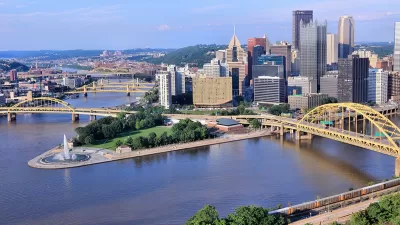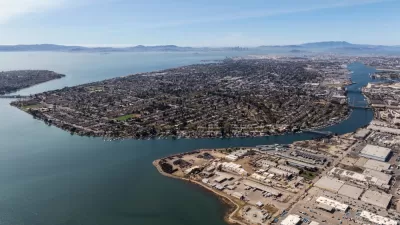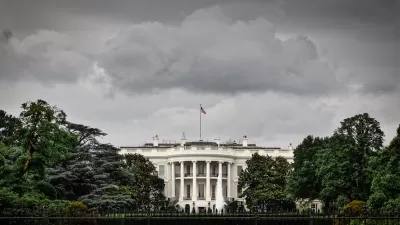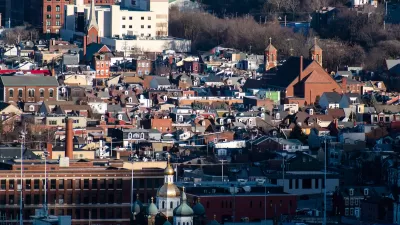A study by the Port Authority of Allegheny County warns against displacement of low-income residents and calls for an increased focus on equity in developments around transit stations.

The Port Authority of Allegheny County's "33-page self-evaluation of its five-year-old program to encourage transit-oriented development" concluded that "the agency should do more to make sure that development reaches those who need public transit the most," reports Ed Blazina.
"One of the main goals [of the program] is to increase population density around transportation stations with affordable housing so that those most likely to use transit have easy access, which would improve the quality of life for residents and ridership on public transit." Yet "the study shows that this type of development may be causing gentrification, drawing higher-income residents who don’t necessarily use public transit."
The study urges the agency to prioritize equity. "It is not simply enough to build housing units adjacent to transit: We must ensure that those who are most dependent on public transit can live and work in these developments and are not displaced as a result of them," the study says. It also "encouraged Port Authority to work more closely with local communities to set zoning requirements and encourage affordable housing to be included in projects close to transit" and reduce parking requirements to make construction more affordable and encourage transit use.
"The agency is in the process of finalizing plans to refurbish three stations over the next few years that could have development benefits on its property and the surrounding neighborhood."
FULL STORY: Port Authority study pushes more diverse development around transit stations

Study: Maui’s Plan to Convert Vacation Rentals to Long-Term Housing Could Cause Nearly $1 Billion Economic Loss
The plan would reduce visitor accommodation by 25,% resulting in 1,900 jobs lost.

North Texas Transit Leaders Tout Benefits of TOD for Growing Region
At a summit focused on transit-oriented development, policymakers discussed how North Texas’ expanded light rail system can serve as a tool for economic growth.

Using Old Oil and Gas Wells for Green Energy Storage
Penn State researchers have found that repurposing abandoned oil and gas wells for geothermal-assisted compressed-air energy storage can boost efficiency, reduce environmental risks, and support clean energy and job transitions.

From Blight to Benefit: Early Results From California’s Equitable Cleanup Program
The Equitable Community Revitalization Grant (ECRG) program is reshaping brownfield redevelopment by prioritizing projects in low-income and environmental justice communities, emphasizing equity, transparency, and community benefits.

Planting Relief: Tackling Las Vegas Heat One Tree at a Time
Nevada Plants, a Las Vegas-based nonprofit, is combating the city’s extreme urban heat by giving away trees to residents in underserved neighborhoods, promoting shade, sustainability, and community health.

How Madison’s Tree Planting Efforts Are Growing a Healthier Community
Madison’s annual tree planting initiative is enhancing environmental resilience, public health, and community livability by adding 1,400 carefully selected trees citywide, with strong community and institutional support for urban forestry.
Urban Design for Planners 1: Software Tools
This six-course series explores essential urban design concepts using open source software and equips planners with the tools they need to participate fully in the urban design process.
Planning for Universal Design
Learn the tools for implementing Universal Design in planning regulations.
Ascent Environmental
Borough of Carlisle
Institute for Housing and Urban Development Studies (IHS)
City of Grandview
Harvard GSD Executive Education
Toledo-Lucas County Plan Commissions
Salt Lake City
NYU Wagner Graduate School of Public Service





























